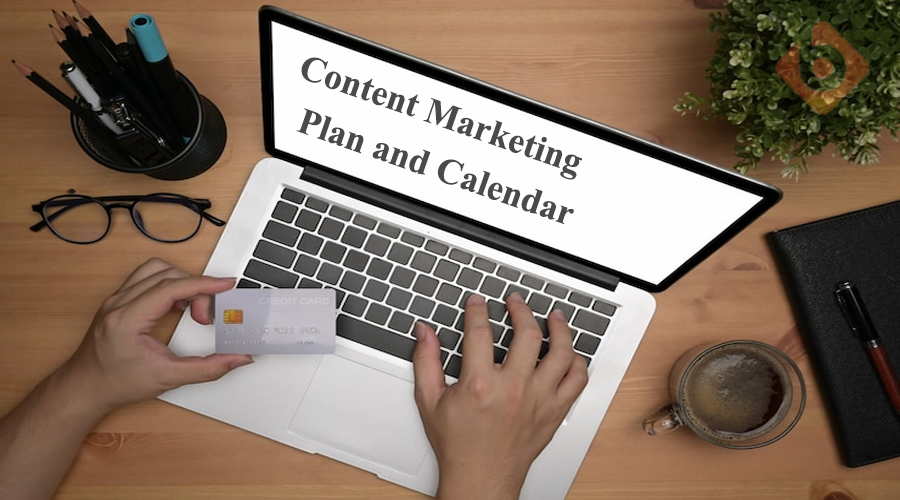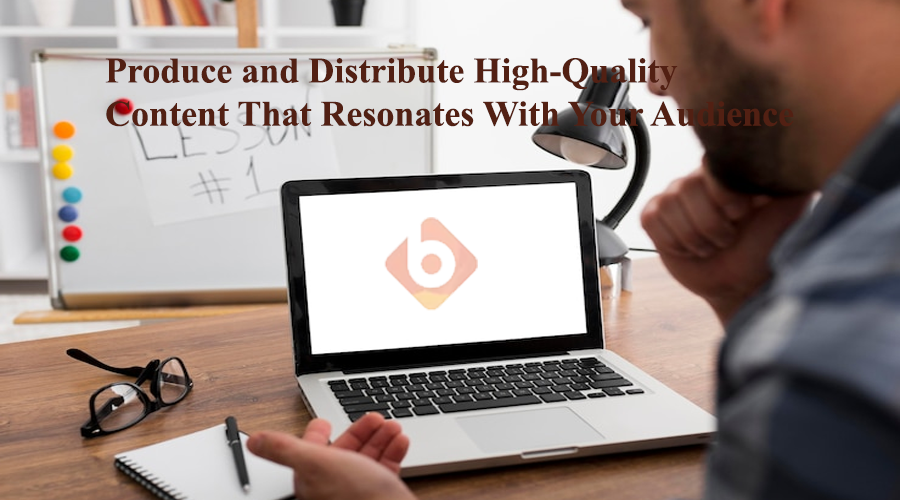Content Marketing: A Guide to Maximizing Effectiveness
Content marketing is a strategic approach to creating and distributing valuable, relevant, and consistent content to attract and retain a clearly defined audience — and, ultimately, to drive profitable customer action.
But how can you make sure that your content marketing efforts are effective and aligned with your business goals? How can you measure the impact of your content on your target audience and your bottom line?
In this guide, we will cover some of the key aspects of content marketing, such as:
- How to define your content marketing objectives and strategy
- How to create a content marketing plan and calendar
- How to produce and distribute high-quality content that resonates with your audience
- How to optimize and improve your content performance over time
- How to use the Webfity website builder to easily edit user-oriented content

Define Your Content Marketing Objectives and Strategy
Before you start creating any content, you need to have a clear idea of what you want to achieve with your content marketing efforts. What are the specific goals that you want to accomplish with your content? Who are you trying to reach and influence with your content? How will you measure the success of your content marketing campaigns?
Some common content marketing objectives include:
- Increasing brand awareness and visibility
- Generating leads and conversions
- Building trust and credibility
- Educating and informing potential customers
- Nurturing and retaining existing customers
- Driving traffic and engagement
- Boosting SEO rankings and organic visibility
To define your content marketing objectives, you need to align them with your overall business goals and your customer journey. You also need to make sure that they are SMART: Specific, Measurable, Achievable, Relevant, and Time-bound.
For example, instead of saying “I want to increase my website traffic”, you could say “I want to increase my website traffic by 20% in the next six months by creating and promoting engaging blog posts that target relevant keywords”.
Once you have defined your objectives, you need to develop a content marketing strategy that outlines how you will achieve them. A content marketing strategy is a document that describes:
- Your target audience: who they are, what they need, what they care about, what challenges they face, what questions they have, etc.
- Your value proposition: how your product or service can help your audience solve their problems or achieve their goals, what makes you different from your competitors, etc.
- Your content themes and topics: what kind of content you will create, what topics you will cover, what tone and style you will use, etc.
- Your content formats and channels: what types of content you will produce (e.g., blog posts, ebooks, videos, podcasts, etc.), what platforms you will use to distribute them (e.g., website, social media, email, etc.), etc.
- Your content resources and budget: what tools and resources you will need to create and manage your content (e.g., software, equipment, team members, freelancers, etc.), how much money you will allocate for your content production and promotion, etc.
-Your content KPIs and metrics: what indicators you will use to measure the effectiveness of your content (e.g., traffic, views, shares, comments, leads, conversions, revenue, etc.), how often you will track and report them, etc.
A good content marketing strategy should be based on thorough research and analysis of your market, competitors, customers, and existing content. It should also be flexible enough to adapt to changing circumstances and feedback.
Create a Content Marketing Plan and Calendar
Once you have a clear strategy in place, you need to create a detailed plan for executing it. A content marketing plan is a document that specifies:
- What content you will create: the title, format, topic, goal, audience persona,
- How you will create it: the content outline, keywords, sources, references, etc.
- When you will create it: the deadline, publication date, frequency, etc.
- Who will create it: the content owner, writer, editor, designer, etc.
- Where you will distribute it: the channel, platform, URL, etc.
- How you will promote it: the promotion strategy, tactics, tools, etc.

A content marketing plan helps you organize your content production and distribution process and ensure that you deliver high-quality content on time and on budget. It also helps you align your content with your objectives and audience needs and expectations.
One of the best ways to create a content marketing plan is to use a content marketing calendar. A content marketing calendar is a visual tool that shows you:
- What content you have planned for each month, week, or day
- What stage of the content creation process each piece of content is in
- What tasks and responsibilities each team member has for each piece of content
- What deadlines and milestones you have to meet for each piece of content
How to Integrate eCommerce and Marketing Tools with a Free Website Builder
A content marketing calendar helps you:
- Plan your content ahead of time and avoid last-minute rush or missed opportunities
- Coordinate your content efforts across different teams and departments
- Manage your content workflow and resources efficiently and effectively
- Keep track of your content performance and results
You can use various tools and templates to create a content marketing calendar, such as spreadsheets, online platforms, or software applications. You can also customize your calendar according to your specific needs and preferences.
Produce and Distribute High-Quality Content That Resonates With Your Audience
The next step is to actually create and publish your content according to your plan and calendar. This is where you need to apply your creativity and skills to produce engaging, informative, and persuasive content that resonates with your audience and drives them to take action.

Some of the best practices for producing high-quality content are:
- Know your audience: understand their pain points, goals, interests, preferences, etc. and tailor your content accordingly
- Know your purpose: define the main goal and message of your content and make sure it aligns with your objectives and value proposition
- Know your topic: research your topic thoroughly and provide accurate, relevant, and up-to-date information
- Know your keywords: conduct keyword research and optimize your content for SEO to increase its visibility and reach
- Know your format: choose the best format for your content based on your topic, goal, audience, channel, etc. and follow the best practices for each format
- Know your tone: use a consistent tone and voice that reflects your brand personality and matches your audience’s expectations
- Know your style: use clear, concise, and compelling language that communicates your message effectively and persuasively
- Know your design: use visual elements such as images, videos, graphs, charts, etc. to enhance your content’s appeal and readability
- Know your sources: cite credible sources and references to support your claims and arguments
- Know your quality: proofread, edit, and review your content before publishing it to ensure it is error-free and polished
Once you have created your content, you need to distribute it to the right channels and platforms where your audience can find it and consume it. Some of the most common channels for distributing content are:
- Your website: this is where you host most of your content assets such as blog posts,
ebooks, white papers, case studies, etc. You should optimize your website for user experience, SEO, and conversions
- Your social media: this is where you share and promote your content to your followers and fans, as well as to potential customers who are looking for information or recommendations. You should choose the best social media platforms for your niche and audience, and create engaging and interactive posts that drive traffic and engagement
- Your email: this is where you send your content to your subscribers and leads, as well as to existing customers who need to be nurtured and retained. You should segment your email list based on different criteria and personalize your email content and campaigns to increase open rates and click-through rates
- Your online communities: this is where you participate in relevant online forums, groups, blogs, podcasts, etc. where your audience hangs out and seeks advice or feedback. You should provide value and build relationships with your community members, and share your content when appropriate and relevant
- Your paid media: this is where you use paid advertising methods such as Google Ads, Facebook Ads, LinkedIn Ads, etc. to amplify your content reach and visibility to a larger and more targeted audience. You should optimize your ads for keywords, audience, budget, and conversions
You should also consider using other channels such as influencers, partners, affiliates, media outlets, etc. to distribute your content to a wider and more diverse audience. You should also experiment with different channels and formats to see what works best for your content and audience.
Optimize and Improve Your Content Performance Over Time

The final step is to monitor and analyze your content performance over time and see how it is helping you achieve your objectives and strategy. You should use various tools and metrics to measure the impact of your content on your audience behavior and actions, such as:
- Traffic: how many people visit your website or landing page where your content is hosted
- Views: how many people view or watch your content on different platforms or channels
- Shares: how many people share or recommend your content to others on social media or other platforms
-Comments: how many people comment or engage with your content on different platforms or channels
- Leads: how many people provide their contact information or sign up for your offer after consuming your content
- Conversions: how many people take the desired action or purchase your product or service after consuming your content
- Revenue: how much money you generate from your content directly or indirectly
You should also use various tools and metrics to measure the quality and relevance of your content, such as:
- Bounce rate: how many people leave your website or landing page without taking any action after viewing your content
-Time on page: how long people spend on your website or landing page where your content is hosted
- Scroll depth: how far people scroll down on your website or landing page where your content is hosted
- Feedback: how satisfied or dissatisfied people are with your content based on surveys, ratings, reviews, testimonials, etc.
- SEO ranking: how well your content ranks on search engines for relevant keywords
You should track and report these metrics regularly and compare them with your benchmarks and goals. You should also identify the strengths and weaknesses of your content, as well as the opportunities and threats in the market. Based on these insights, you should optimize and improve your content accordingly.
Some of the ways to optimize and improve your content are:
-Update: keep your content fresh and current by adding new information, data,
Webfity's free website builder provides a robust platform to maximize the effectiveness of your content marketing strategy. With its user-friendly interface, responsive design, content organization features, blogging capabilities, SEO optimization tools, social media integration, and analytics tracking, Webfity empowers businesses to create compelling content and deliver it to their target audience with precision. By leveraging the power of Webfity, you can enhance your content marketing efforts, drive brand awareness, and achieve your business goals in the digital landscape.
